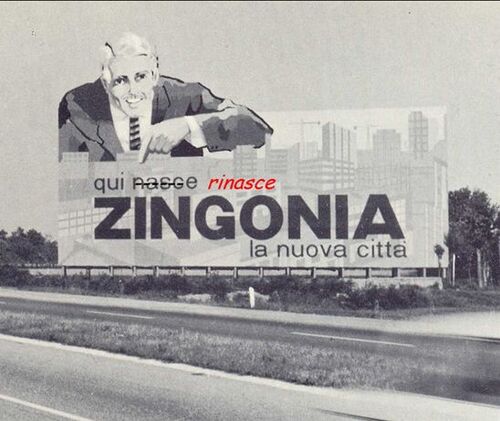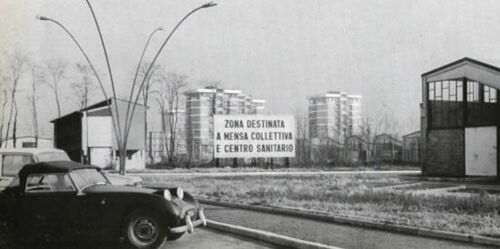LED Workshop Zingonia 2016
Introduction
This intensive program will provide an opportunity for online seminar participants to apply theory and methods to a real case study. During the Zingonia workshop participants will apply a set of innovative tools to analyze landscape complexities with respect to its inhabitants. We will collaborate with them and all stakeholders (associations, schools, administrative boards…) to draw attention to places where specific strategies can increase the sense of community and belonging.
For further information on the Zingonia case you may listen to an online lecture given by Dr Deni Ruggeri (NMBU Norway)on 17th of November 2015:
Key dates and registration
June 19-29, Zingonia (near Bergamo),Northern Italy
LED Zingonia Workshop - Online Application
Why Zingonia?
Zingonia presents a series of relevant elements regarding landscape and democracy. We can develop strategies and representation methodologies through this case study, which could be applied in other similar contexts. In the scheme below we list the main themes or layers which the participants will focus on. The second column specifies critical issues connected to each theme.
Social layer - Zingonia Is a New Town
All inhabitants are 'immigrants' - we find a multitude of communities.Each citizen belongs to many communities, and each community occupies a physical landscape.
- What is the “space-LANDSCAPE?” of each community?
- Where is each community’s identity center?
- Which kind of geography emerges from the representation of these spaces and centers?
We will consider which community is located where. They may reside in different places within a city which was not previously considered. We will learn how to locate new community spaces and map these.
Historical layer - Zingonia is a New Town, but it is already 50 years old
- What is the relationship between the city and its history?
- How can the landscape of a New Town represent a community’s history, social memories and traditions?
- What is the relationship between citizens and collective memory?
We will consider the landscape as a place to narrate the evolution of a community.
Aesthetic layer - Zingonia’s original plan was not the result of a 'participatory program'
Nevertheless, Zingonia presents a recognizable design.
- Is there a connection between democracy and the quality of urban design? The fresco of Buon Governo in Siena (Lorenzetti, 1338) introduces this parallelism as a certainty. Thinking about landscape democracy in contemporary cities requires challenging old assumptions.
- Is there a democratic landscape aesthetic for contemporary cities?
- Is Democracy a 'visible' quality?
Economical layer - From the industrial era to the actual post-industrial context
Changes in system of industrial production lead to a redesign or re-purposing of industrial areas and infrastructure.
- What is the role of citizens in this process of conversion?
@ layer - Connection and disconnection of a community to its virtual image
- What is the relationship between real and virtual landscapes?
- Which tools do citizens of today have to represent their community and envision its future identity?
While the virtual world may help a democracy by giving voices to non-dominant images of the city, we need to become aware of the limitations that the virtual layer can create in the relationship between citizens and a physical space.
Interactions
Zingonia is a town where a process of regeneration is taking place. A number of residents, companies, associations and institutions have begun to collaborate with local and foreign partners to develop urban regeneration programs. Universities have already intervened in this process with a project of urban analysis particularly dedicated and realized in collaboration with local school students.
This program has been useful to identify communities and stakeholders such as:
Institutions:
- 5 municipalities;
- one local public school
- Parish’s oratory
Associations:
- Sengalese Association
- “Orti Sociali” [social gardens] association
Groups:
- Citizens
- Virtual groups “Quelli della Zingonia”
The workshop would like to interact with these stakeholders, trying to build relationships among different subjects and contributing to the development of a common new design.
Stakeholders' specific profiles suggest a few themes:
- production and economy
- urban farming, ecology, nature
- housing, co-housing and dwelling
- public spaces, infrastructures
- cultural, community building processes, school.
Synthesis
- The results of these investigations will most definitely demand new forms of representation and mapping in order to capture the non-physical attributes of the landscape.
- Each layer produces a different representation of the same physical space. By overlapping all graphics and maps, it will perhaps be possible to recognize special spaces as 'social condenser': places, and phenomena, which could be challenging in order to emphasize processes for a democratic participation in planning and urban management.
- The workshop will mix communication by invited researchers, interdisciplinary team-work and relations with citizens and stakeholders.
- After this analysis, workshop participants will be asked for a draft proposal of a new “social condenser” and develop in tandem with local participants (administrators, stakeholders, focus groups etc.) a strategic plan for a future which will nurture and allow such spaces to continue and grow within the city.

